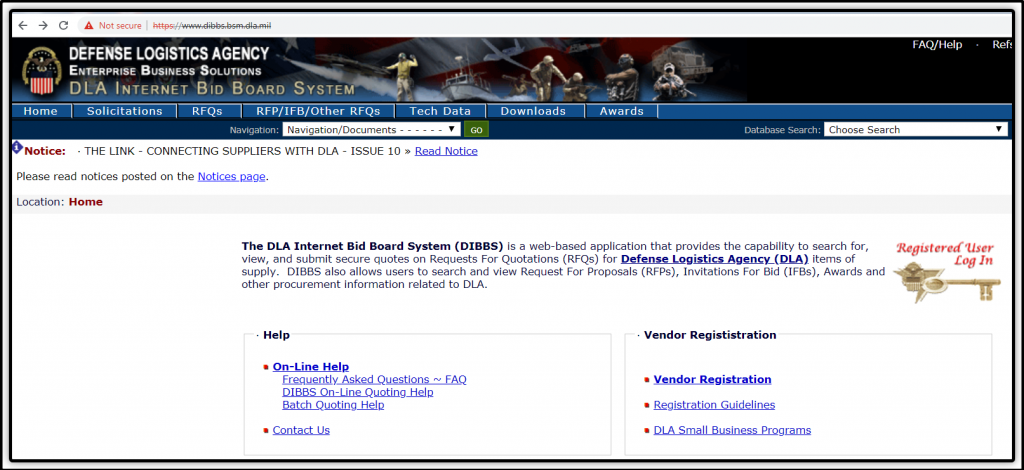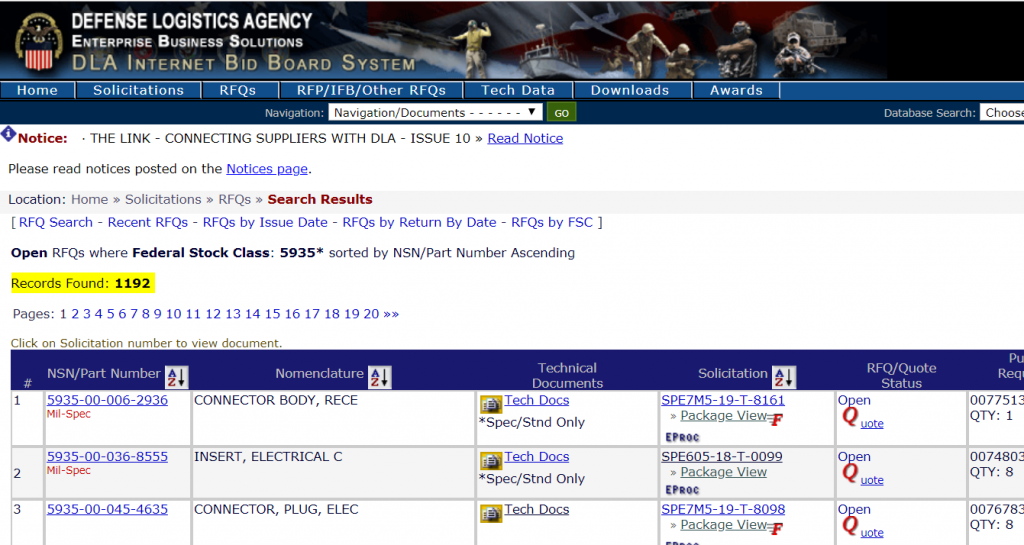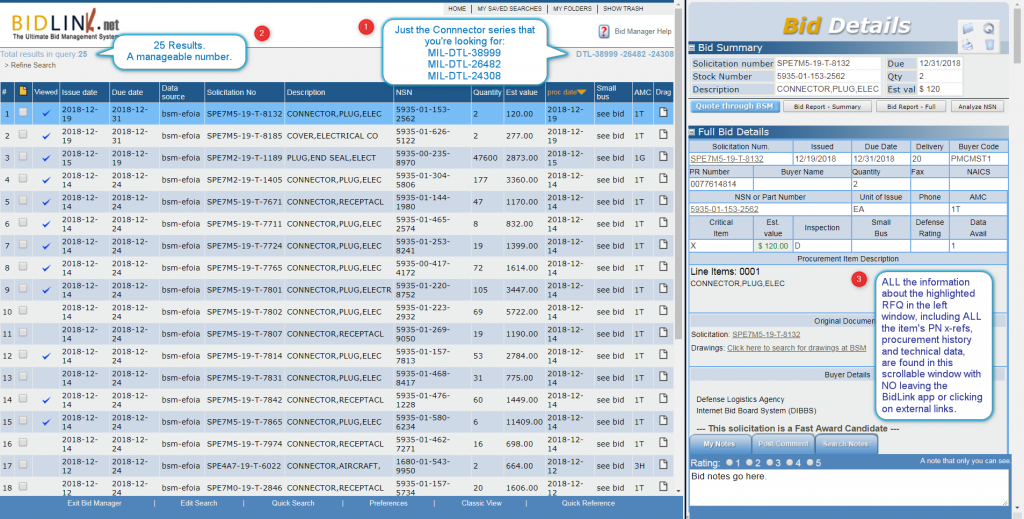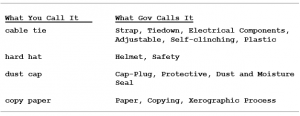Understanding and screening solicitations for their Acquisition Method Code (AMC) and Acquisition Method Suffix Code (AMSC) is important because it quickly reveals if your company is eligible to bid on the solicitation and indicates special technical characteristics of the item. So, by correctly interpreting the item’s AMC / AMSC you’ll know right-off-the-bat if you should even consider the solicitation.
What AMC / AMSC Mean
DoD buyers use AMC/AMSC when they create solicitations. Each National Stock Number (NSN) has its own AMC/AMSC. The unique two place code describes (a) the part’s level of “acquisition competitiveness” and, (b) the availability of supporting technical data. A part’s AMC/AMSC often changes over time leading to greater opportunities for suppliers.
We’ll look at each code separately and then explain how to use them advantageously.
AMC – Acquisition Method Code is single digit code that describes the type of supplier eligible to supply the part. One of the following six numbers will appear (what each code means to the buyer is also defined here):
1 – Acquire the part competitively.
2 – Acquire the part competitively for first time (similar to 1).
3 – Acquire the part directly from its manufacturer, only.
4 – Acquire the part directly from its manufacturer only, for the first time. (similar to 3).
5 – Acquire the part directly from its prime contractor only (aka “sole source”).
0 – The part was not assigned AMC 1 – 5.
Some conclusions:
- Resellers of every kind will be interested in solicitations with AMC 1 & 2; but resellers who are not Original Equipment Manufacturers (OEMs) will be disqualified from bids for parts with AMC 3 & 4.
- OEMs want to further evaluate solicitations with AMC 3 & 4 that they can manufacture.
- Resellers and OEMs may be interested in contacting the prime contractor for solicitations with AMC 5 to see if they can provide the part directly to the prime, as a subcontractor.
AMSC – Acquisition Method Suffix Code is a supplementary code that further explains the preceding AMC code. There are 19 AMSCs, many describing only fine differences in an item’s technical characteristics and/or the availability of technical data to support the item’s acquisition. We’ve simplified the grouping of AMSCs to suggest how you might wish to think about them, as follows:
Unconstrained Procurement (no significant barriers to acquisition) – A,
G, Z
Restrictions on source of supply (i.e. the item is source controlled, QPL, limited to existing sources, has special technical characteristics, there is insufficient data with which to source from new supplier, etc.) – B, C, D, H, K, L, M, N, P, Q, R, S, T, U, V, Y
Some Conclusions:
- New opportunities are often found with AMSC “G” which signifies, “The Government has unlimited rights to the technical data, and the data package is complete.” New suppliers may still have to pass first article testing.
- Even though a part has a restrictive AMSC code, it can be worth considering. For example, suppliers experienced with similar parts to the one being procured may be able to “reverse-engineer” the required part. The prospective supplier can then either contact the government buyer to ascertain the feasibility of second-source procurement, or supply it to the current source of supply.
Examples of Code Combinations Indicating Competitive Opportunities
1G & 2G – Competitive with drawings available.
1T & 2T – Competitive but controlled by Qualified Products List (QPL). There are more opportunities here than you might realize. We’ll explain why active suppliers should be tracking these code combinations and how they can get on the QPLs and supply these parts, in Part 2 of this article.
1L & 2L – Competitive and the annual buy value of this part is < $10,000.
1Z & 2Z – Competitive and the part is considered a Commercial-Off-The-Shelf (COTS) item.
Unfortunately, AMC/AMSC codes are not usually listed in either the solicitation documents or on government websites such as FBO FedBizOpps (FBO) or DLA Internet Bid Board System (DIBBS). Rather, DoD will include in solicitation documents a statement like “full and open competition,” and will list the applicable drawing(s) and technical data in the government’s possession (note that this information infers that an AMC/AMSC “1G” or “2G” applies). To find this out, you’ll have to read through the solicitation document (see the following sample page). If you review multiple DoD solicitations for bidding opportunities, reading through all this information will take a very long time.

(click on image to enlarge)
BidLink Streamlines Searches by AMC/AMSC
BidLink does provide the AMC/AMSC for parts in DoD solicitations AND allows you to filter solicitations by AMC/AMSC code.
For example, let’s say that you wish to see all current solicitations with “1G” and “2G” AMC/AMSC. In BidLink.net you can easily generate a list of all current competitive solicitations, like this one:

(click on image to enlarge)
BidLink.net also provides multiple filters, so you can further refine your search:
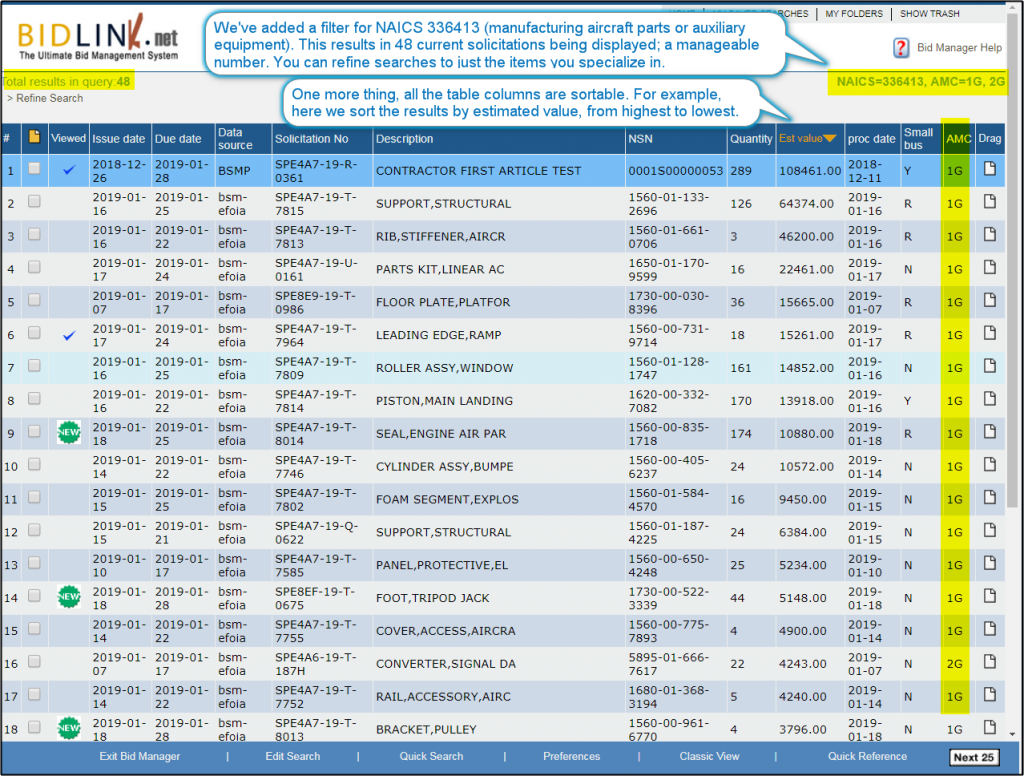
(click on image to enlarge)
BidLink.net provides a user-friendly interface, designed to improve the efficiency and productivity of your government solicitations search and bidding workflow.
To learn more about BidLink.net, and to try it for free, click here >>BidLink.net FREE TRIAL.
If you found this article interesting, check this out >> BidLink.net — Better than DIBBS


